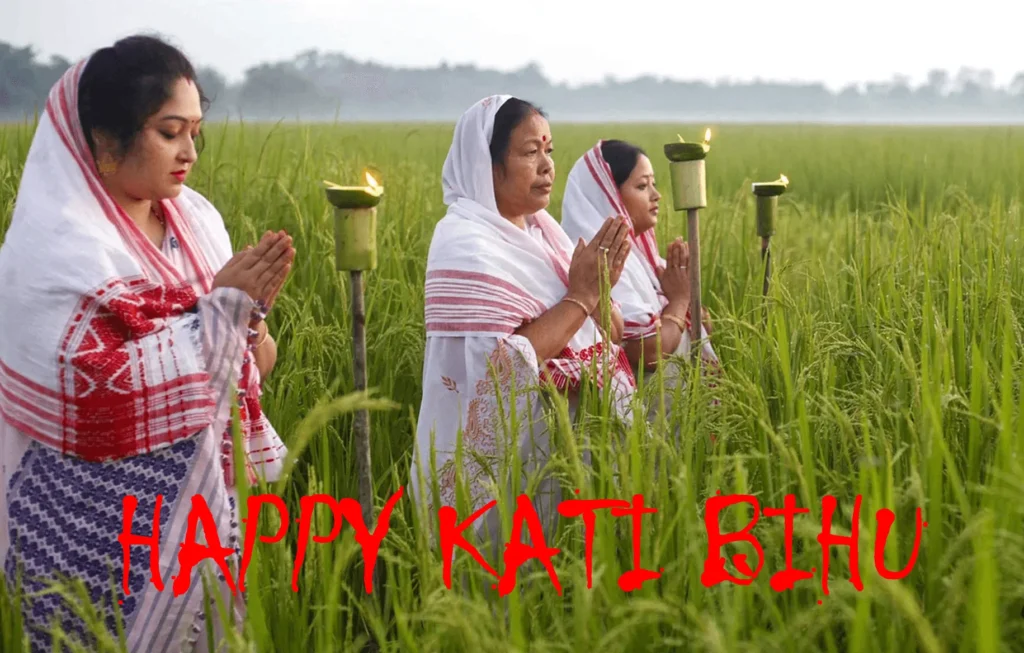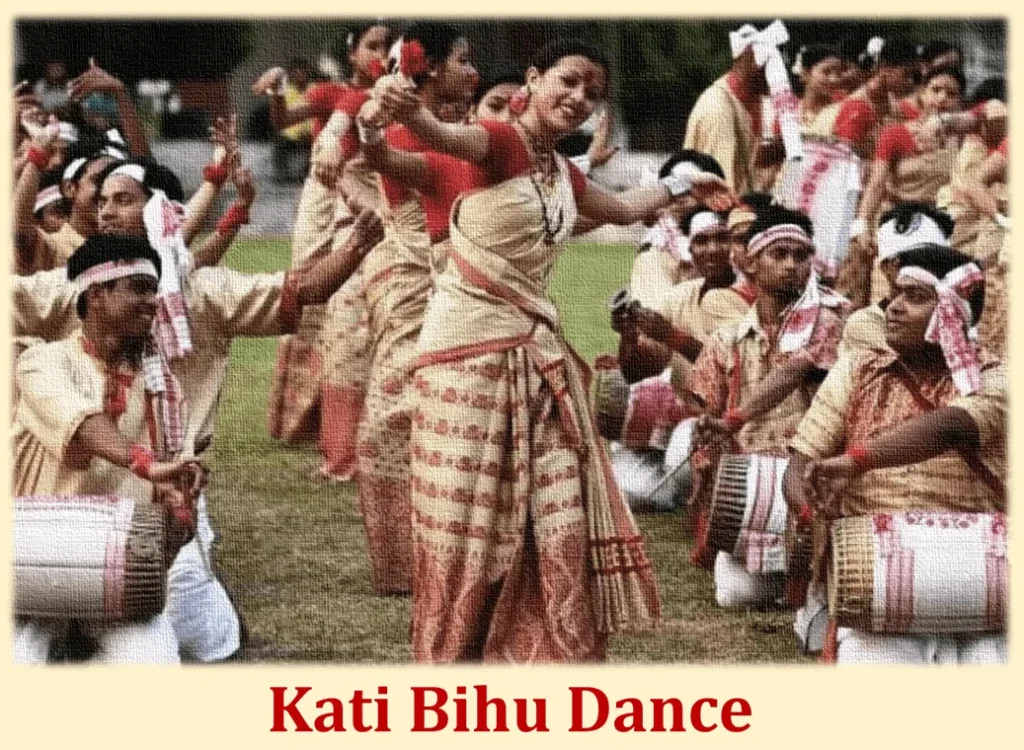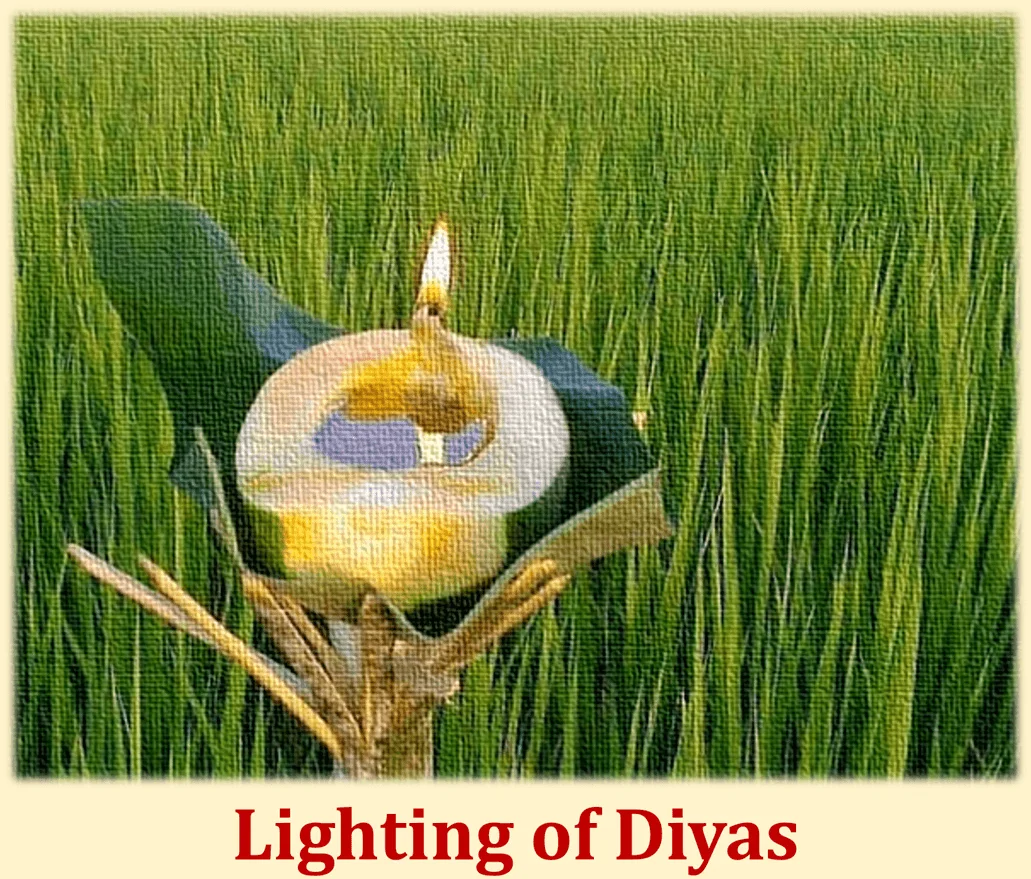
The vibrant and diverse cultural tapestry of India is adorned with countless festivals, each celebrated with enthusiasm and fervor. Among the lesser known yet intriguing festivals is Kati Bihu, celebrated predominantly in the northeastern state of Assam. Kati Bihu, also known as Kangali Bihu or the Festival of Lights, holds a special place in the hearts of the Assamese people.
This unique celebration, primarily an agrarian festival, illuminates the fields and homes of Assam during the crucial month of Kati, marking the end of the monsoon and the beginning of the winter season. In this blog post, we will delve deep into the customs, traditions, and significance of Kati Bihu, shedding light on how this festival connects Assamese communities to their agricultural roots.
Chronicles of Kati Bihu
Kati Bihu, also referred to as Kongali Bihu, stands as a distinctive festival deeply ingrained in the cultural fabric of Assam, a jewel in India‘s North-East. This solemn observance typically graces the calendar in mid-October, its atmosphere tinged with a contemplative air. Unlike its more exuberant counterparts, Kati Bihu is a time for introspection, a moment to ponder over the challenges of the preceding months.
October, in the verdant landscapes of Assam, ushers in the sowing season. The sight of newly sprouting paddy fields juxtaposed against the emptiness of granaries paints a poignant picture, eloquently symbolizing ‘Kangal’ — a term that resonates with the notion of ‘broke.’
Among the Assamese, Kati Bihu holds a place of prominence alongside Bhogali Bihu and Rongali Bihu. Beyond the confines of homes, clay lamps illuminate the surroundings, casting a warm glow. The holy basil plant takes on a festive persona, bedecked with vibrant garlands and twinkling lights. A tradition steeped in antiquity, the practice of lighting lamps finds its roots in an era where lanterns in paddy fields played dual roles, both luring insects and acting as a natural insecticide.
In a nod to their ancestors and history, traditional lamps, known as ‘saaki,’ find their perch atop sturdy bamboo sticks, offering a beacon to guide spirits homeward. The spirit of Kati Bihu resonates across the entire state, uniting people with a profound sincerity. It transcends barriers of religion, social strata, and caste, as individuals from all walks of life converge to pay homage to the gravity of their circumstances.
This unique rendition offers a fresh perspective on the cultural significance of Kati Bihu, weaving together tradition, symbolism, and the unifying spirit of the festival.
The Season of Kati
Kati Bihu, the festival celebrated in the Assamese month of Kati, typically falls in mid-October. The Assamese term “kati,” which denotes the cutting and binding of crops, is the source of the name “Kati”. As the start of the harvest season and the beginning of the preparations for the upcoming winter crop, this time is crucial for farmers. Assam’s agriculture depends on the paddy crop, which is typically growing in the fields during this time.
Significance and Traditions
- Lighting of Akaxor Gohona: The celebration of Kati Bihu begins by lighting an earthen lamp called “Akaxor Gohona” at the base of the household tulsi plant. This is a symbol of invoking blessings from the gods for a prosperous harvest and protection from natural calamities. The lighting of the lamp is considered a way to dispel darkness and bring light into their lives.
- Burning of Akaxi Guri: Another intriguing tradition of Kati Bihu is the burning of “Akaxi Guri.” This involves making a bonfire near the paddy fields and offering prayers to the fire god, Agni. The fire is believed to purify the fields and protect the crops from pests and diseases. It also serves as a social gathering where villagers come together to celebrate and seek divine blessings.
- Diyas and Lamps: Kati Bihu is often referred to as the “Festival of Lamps.” People decorate their homes and surroundings with traditional Assamese lamps and earthen oil lamps. This practice is rooted in the belief that the lights will guide the goddess Laxmi, who is the deity of wealth and prosperity, into their homes.
- Paddy Fields: The heart of Kati Bihu celebrations lies in the paddy fields. After the ceremonial lighting and burning of Akaxor Gohona and Akaxi Guri, the farmers visit their fields, where the first harvest begins. They pay respect to the paddy crop and offer prayers for a bountiful harvest in the coming season.
- Traditional Attire: During Kati Bihu, people don traditional Assamese attire. Women wear mekhela chadors, which are traditional Assamese dresses, while men don dhotis or gamosas, a symbol of Assamese culture.
- Offerings to the Cattle: In Assam, cattle are integral to agricultural practices. On Kati Bihu, farmers feed their cattle a special mixture of paddy and jaggery, thanking them for their hard work in the fields. This act symbolizes gratitude and respect towards these animals, which play a vital role in farming.
- Musical Extravaganza: The festival is not just about traditions; it’s also about merriment. People engage in traditional Bihu dances, with the soulful tunes of the Bihu songs filling the air. Bihu dance is a significant cultural expression in Assam, involving graceful movements and vibrant music that create a lively atmosphere.
- Prayers for a Good Harvest: Kati Bihu is a time for farmers to seek the blessings of the deities for a productive harvest season. They pray for good weather, protection from natural calamities, and an abundance of crops.

Kati Bihu: A Fusion of Culture and Agriculture
Kati Bihu beautifully blends the cultural and agricultural aspects of Assam. It is a representation of the deep bond between the Assamese people and their land and not only a harvest festival. The festival highlights the value of agriculture and the arduous labor of farmers by resonating with the rhythms of rural Assam life.
The Lighting of Diyas: Symbolism and Significance
One of the most visually striking aspects of Kati Bihu is the illumination of homes and fields with diyas and lamps. This act is not merely about aesthetics but carries deep symbolic meaning:

- Invoking Goddess Laxmi: The lighting of lamps is done with the hope that the goddess Laxmi, the harbinger of wealth and prosperity, will bless the household. The shimmering lights are believed to guide her to the homes of the faithful.
- Symbol of Hope: As Kati Bihu falls at the cusp of the monsoon season and the onset of winter, the lighting of lamps symbolizes the hope of light dispelling darkness. It represents the belief that, just as the lamps eliminate the physical darkness, the blessings of the goddess will dispel darkness from their lives.
- Cultural Identity: The use of traditional Assamese lamps and diyas not only deepens the cultural connection but also preserves and promotes the artistic and craft traditions of Assam.
Kati Bihu in Different Regions of Assam
While Kati Bihu is celebrated throughout Assam, there can be regional variations in customs and traditions. Here are a few notable distinctions:
- Magh Bihu: In Upper Assam, the day of Kati Bihu is also known as Magh Bihu. The celebrations here are marked by feasts and community gatherings. Young people often go door-to-door singing traditional Bihu songs, known as “Husori,” and seeking offerings from the elders.
- Deori Bihu: Among the Deori community in Assam, Kati Bihu is celebrated with unique customs. The day begins with a special prayer, followed by the preparation of a variety of traditional foods, including rice cakes known as “Deori Khar.” These offerings are then distributed among the community members.
- Mising Bihu: The Mising community, also known as Mishing, celebrates Kati Bihu with great enthusiasm. The community members prepare a special dish called “Po:Rice” and conduct traditional dances during the festivities.
Kati Bihu: Nurturing Agricultural Traditions
More than merely a holiday, Kati Bihu is a symbol of Assam’s firmly ingrained agricultural customs. The celebration serves as a reminder of the vital importance of farming to the Assamese people. Farmers can use it as inspiration as they go into the key portion of the harvest season.
- Harvest Festival: Kati Bihu heralds the start of the harvest season, and the festival serves to recognize the labor-intensive efforts made in the fields. It brings a sense of fulfillment and joy as the first fruits of the labor are reaped.
- Agricultural Preservation: The celebration draws attention to the significance of defending Assam’s agrarian heritage. It promotes the transmission of agricultural knowledge from one generation to the following, guaranteeing the persistence of conventional farming methods.
- Social Bonding: Kati Bihu fosters a sense of community among the people of Assam. As families and communities come together to celebrate, it strengthens the social fabric and helps maintain the unique cultural identity of the region.
- Prayers for a Good Harvest: The rituals and prayers during Kati Bihu are a plea for a successful and fruitful harvest. Farmers ask for the blessings of the deities to safeguard their crops and ensure an abundance of produce.
Conclusion
Kati Bihu, the Festival of Lights, is a unique and captivating celebration that weaves together the threads of culture, agriculture, and spirituality in Assam. It serves as evidence of the Assamese people’s unbroken bond with their own land. Kati Bihu stands as a beacon of optimism for a plentiful crop and a prosperous future as the earthen lights illuminate the night.
This festival is a vivid portrayal of the resilience and cultural richness of Assam, making it a jewel in the crown of India’s diverse festivals. The next time you find yourself in Assam during Kati Bihu, make sure to join in the celebrations and experience the magic of this unique and heartfelt festival.
